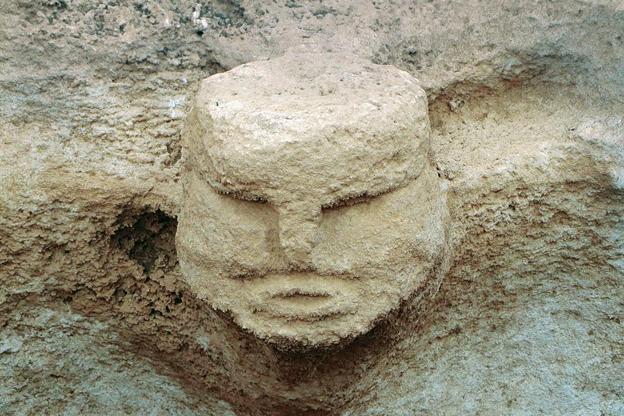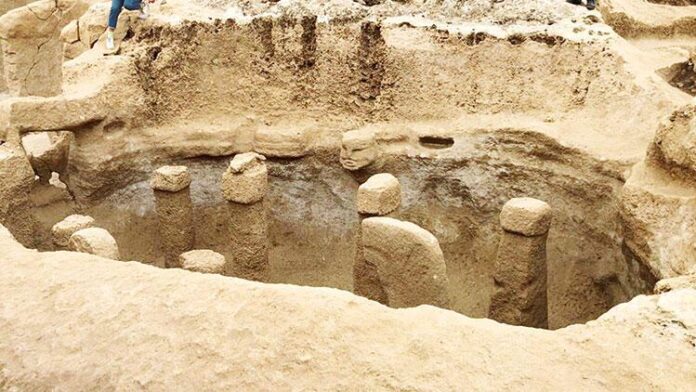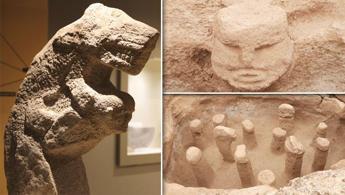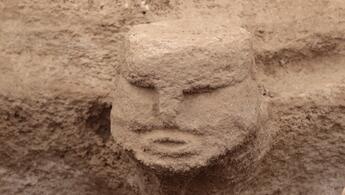by Ümit Erdem
Heading the excavations of 12 archaeological sites in Taş Tepeler, including Göbeklitepe, Prof.Dr. Necmi Karul shared the findings of the Neolithic Age in the region. In the Neolithic age, cattle were twice as large and sheep were woolless. Skulls of dead people were removed and new faces were added. Monumental structures, which are considered to be a revolution in terms of architecture, were encountered in the region.
Ümit Erdem- Culture and Tourism Ministry, Sanliurfa at Stone Hills project by conducting studies in 12 archaeological sites. As part of the project, excavations continue in Göbeklitepe , Karahantepe, Gürcütepe, Sayburç, Çakmaktepe, Sefertepe and Yeni Mahalle Mound.
In the coming days, excavations will also begin in Ayanlar, Yogunburç, Harbetsuvan, Kurt Tepesi and Taşlıtepe. In charge of these excavations, Prof. Dr. Necmi Karul shared the findings of the studies carried out so far with the academic world with the presentations he made at the launch of Taş Tepeler.
TRANSITION TO SETTLEMENT
– For 12 thousand years, hunter, gatherer, consumer life gives way to productive life. Living in groups, which organizes our social life today, is being replaced by an individual life in which the house is at the center. The size of the cattle we uncovered is twice the size of today’s cattle. Sheep are longer, they do not have a layer of wool on them, they have a skin with hard bristles. We are trying to unravel this process.
THE BEEF WOULD NOT EAT
– When we consider that grains are cultivated and harvested in 2 million square kilometers all over the world, it becomes clear how important it is to use grains for agriculture in our daily lives. Again, 1.5 billion cattle are consumed all over the world today. This consumption would not exist today if these cattle had not been domesticated. The homeland of all these is Anatolia, especially this region. The first settlements, which were used throughout the year 10 thousand 500 years ago, are beginning to be seen in this geography.
Contrary to what is written in the books
In all of these places, we saw people live for 12 months. It means that they settled down while they were hunter-gatherers. We have seen that hunter-gathering, that is, agriculture and animal husbandry, is a result of settled life, not a cause. This is one of the leading information that has been changed by the results of archaeological excavations in this region in all school books in the world.
THE FOUNDATION OF TODAY’S SKYSCRAPPING
– We encounter monumental structures for the first time in this region. We see that all of these structures are buried in the ground, and that they are round-plan structures and all of them have roofs. At this stage, people do not yet know how to make a self-supporting wall. In this period, people do not know how to make a corner. That’s why they build their structures round. We see that the first angular structures appeared in this region. When you solve the corner, you can build today’s skyscraper. You encounter this discovery, which is revolutionary in terms of architecture, with the oldest examples in the mound in Karahantepe.
FIRST FOX, LION AND BULL DESCRIPTIONS
– We see that there are at least 12 obelisks in all of these structures. Another common feature of these structures is that we see that these structures are buried just as we bury a person after all of their functions are finished. We see that they have been left to be preserved for future generations, together with all their experiences and everything they have inside.
– We encounter many animal depictions on the obelisks. We can say that these animals show a great diversity, from reptiles to large mammals. Again, in some structures, we encounter the first examples of depictions such as fox, Lion and Bull . The common feature of these animals is that they are depicted in a frightening aggressive position. Care was taken to depict it in motion.
SHOWING COMMUNITIES’ SHARED MEMORY
– The combination of several motifs on the obelisks is a sign of the existence of some partnerships. Those motifs are those that are in the memories of those people. This shows us that communities have a common memory.

ANOTHER FACE AFTER DEATH
– There is a headless human motif. It’s about their beliefs. We see that people separate their heads from their bodies and bury their heads separately. After the person dies, they are buried and waited until the meat on them leaves. Later, the skull is taken from there and taken to another place, and another face that does not belong to it is added to it.
– I would like to summarize the results we have achieved in Karahantepe. This whole process begins 10,500 years ago. In the first examples, we see that the way people are depicted is depicted in very schematic simple lines, not too exaggerated. In the later stages of the process, we see that this has changed and the depictions of humans have begun to become more and more monumental, and along with this, the depictions of animals have gradually decreased, and the depictions of humans have begun to take their place. Numerous three-dimensional human head sculptures were unearthed in Karahantepe. We see that all human depictions are masculine.























